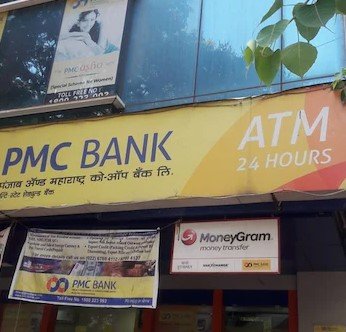Cooperative lenders under pressure as farm defaults rise; political populism, weak lending discipline blamed for financial stress
In a troubling turn for Maharashtra’s rural banking sector, agricultural loan defaults at cooperative banks have surged sharply—just months ahead of a politically charged state election. Meanwhile, public-sector banks in the state are seeing their farm-related non-performing assets (NPAs) ease slightly, highlighting a growing divide in lending behavior and repayment trends across institutions.
The latest figures, pulled from the May 2025 agenda of the State Level Bankers’ Committee (SLBC), paint a worrying picture for cooperative banks. As of March 31, their agri NPA stood at a staggering 24.11%. That’s up from 17.85% in December 2024—a jump of over 600 basis points in just one quarter.
Cooperative Banks in the Red—Again
It’s not the first time cooperative banks have found themselves in such a bind. But this time, the spike in defaults is happening right as political parties flood the countryside with promises of blanket farm loan waivers—a tactic many say encourages wilful defaults.
To be clear, the numbers are grim. Cooperative banks in Maharashtra held ₹8,214 crore in bad agricultural loans as of March-end, up from ₹7,739 crore just three months earlier.
And that’s only part of the picture.
Across the board, the state’s total agricultural NPA stood at ₹31,253 crore by March 2025, nudging up from ₹31,059 crore in December. Percentage-wise, that’s a rise from 11.80% to 11.97%—modest, but notable.
The bulk of that pain is being felt in the cooperative sector.

PSU Banks Show Slight Improvement
While cooperative lenders are drowning, public-sector banks appear to be staying afloat—at least for now.
Their agricultural NPAs fell marginally from ₹18,940 crore in December to ₹18,764 crore in March. That’s a dip in percentage terms from 17.08% to 16.73%.
One-sentence paragraph for emphasis: It’s not a turnaround—but it’s not a collapse either.
Experts say this divergence has a lot to do with how these two systems function.
While public-sector banks lend to individual farmers and often carry stricter borrower profiling and risk assessments, cooperative banks tend to route credit through local Primary Agricultural Cooperative Societies (PACS), which are village-level institutions that often double up as vote banks.
That kind of informal lending culture leaves cooperative banks exposed—especially when political winds start to blow.
Political Promises, Real-World Defaults
At the heart of the issue is a pattern that’s all too familiar in Indian politics: promise farm loan waivers, win votes, and leave banks to clean up the mess.
According to multiple bankers who spoke off-record, there’s a growing perception among borrowers—especially in rural pockets of Vidarbha, Marathwada, and western Maharashtra—that loans taken from cooperative institutions need not be repaid if elections are around the corner.
This perception isn’t entirely baseless. Several farm loan waiver schemes in the past have selectively bailed out borrowers—often only from co-ops, while leaving out commercial bank loans.
That’s led to a vicious cycle.
-
Loan waiver promise fuels non-repayment.
-
Banks tighten credit in response.
-
Farmers move to informal lenders.
-
Rural financial stress deepens.
And the cycle repeats every five years.
Short-Term Politics, Long-Term Impact
For cooperative banks, this isn’t just a bad quarter—it’s a structural crisis. Unlike commercial banks, which have central government support and diversified loan portfolios, co-ops rely heavily on farm credit for both revenue and survival.
In some districts, up to 70% of their advances are to the agricultural sector. If those loans go sour, the entire institution wobbles.
Add to that weak governance structures, limited professional oversight, and over-reliance on PACS, and you’ve got a recipe for recurring financial instability.
“Politicians treat these banks as tools for rural appeasement,” said a former NABARD official. “But they forget that banks need capital, compliance, and collections to survive—not just political goodwill.”
The Numbers Don’t Lie
Here’s how the NPA numbers stack up, based on SLBC data:
| Bank Type | Dec 2024 Agri NPA | Mar 2025 Agri NPA | % Change |
|---|---|---|---|
| Co-operative Banks | ₹7,739 crore | ₹8,214 crore | +6.14% |
| PSU Banks | ₹18,940 crore | ₹18,764 crore | -0.93% |
| Total Maharashtra | ₹31,059 crore | ₹31,253 crore | +0.63% |
That 6% rise in just three months for co-ops is not just a blip. It’s a warning signal.
What’s the Way Forward?
The RBI, coincidentally, is already pushing new regulatory reforms for cooperative banks—many of which now seem urgent.
Its recently released draft norms propose tougher compliance, tighter capital rules, mandatory Core Banking Solutions, and more professional boards. But those changes are structural and long-term.
The immediate crisis, however, is political.
Unless parties stop dangling loan waivers as campaign candy, bankers say the financial health of the cooperative sector will keep swinging with the election cycle.
For now, the state government hasn’t announced any official waiver. But the mere expectation has already done the damage.
And in banking, perception often becomes reality.








